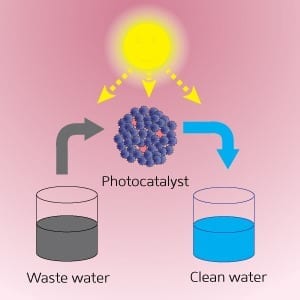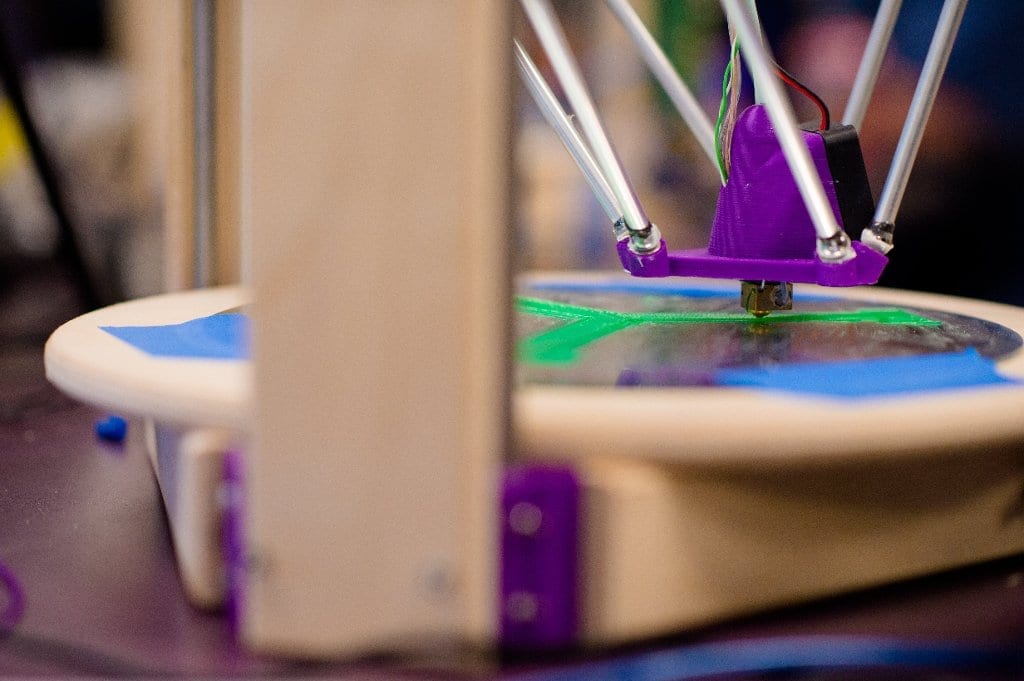
Nanotech enables powerful and portable sterilization equipment
For the first time, researchers have created light-emitting diodes (LEDs) on lightweight flexible metal foil.
Engineers at The Ohio State University are developing the foil based LEDs for portable ultraviolet (UV) lights that soldiers and others can use to purify drinking water and sterilize medical equipment.
In the journal Applied Physics Letters, the researchers describe how they designed the LEDs to shine in the high-energy “deep” end of the UV spectrum. The university will license the technology to industry for further development.
Deep UV light is already used by the military, humanitarian organizations and industry for applications ranging from detection of biological agents to curing plastics, explained Roberto Myers, associate professor of materials science and engineering at Ohio State.
The problem is that conventional deep-UV lamps are too heavy to easily carry around.
“Right now, if you want to make deep ultraviolet light, you’ve got to use mercury lamps,” said Myers, who is also an associate professor of electrical and computer engineering. “Mercury is toxic and the lamps are bulky and electrically inefficient. LEDs, on the other hand, are really efficient, so if we could make UV LEDs that are safe and portable and cheap, we could make safe drinking water wherever we need it.”
He noted that other research groups have fabricated deep-UV LEDs at the laboratory scale, but only by using extremely pure, rigid single-crystal semiconductors as substrates—a strategy that imposes an enormous cost barrier for industry.
Foil-based nanotechnology could enable large-scale production of a lighter, cheaper and more environmentally friendly deep-UV LED. But Myers and materials science doctoral student Brelon J. May hope that their technology will do something more: turn a niche research field known as nanophotonics into a viable industry.
“People always said that nanophotonics will never be commercially important, because you can’t scale them up. Well, now we can. We can make a sheet of them if we want,” Myers said. “That means we can consider nanophotonics for large-scale manufacturing.”
In part, this new development relies on a well-established semiconductor growth technique known as molecular beam epitaxy, in which vaporized elemental materials settle on a surface and self-organize into layers or nanostructures. The Ohio State researchers used this technique to grow a carpet of tightly packed aluminum gallium nitride wires on pieces of metal foil such as titanium and tantalum.
The individual wires measure about 200 nanometers tall and about 20-50 nanometers in diameter—thousands of times narrower than a human hair and invisible to the naked eye.
In laboratory tests, the nanowires grown on metal foils lit up nearly as brightly as those manufactured on the more expensive and less flexible single-crystal silicon.
The researchers are working to make the nanowire LEDs even brighter, and will next try to grow the wires on foils made from more common metals, including steel and aluminum.
Learn more: New LEDs may offer better way to clean water in remote areas
The Latest on: Nanophotonics
[google_news title=”” keyword=”nanophotonics” num_posts=”10″ blurb_length=”0″ show_thumb=”left”]
via Google News
The Latest on: Nanophotonics
- Nabiha Saklayenon May 10, 2024 at 1:41 am
Nabiha Saklayen is CEO and co-founder of Cellino, where her team is spearheading the ultra-scalable biomanufacturing of personalized regenerative medicines to make “Your Cells, Your Cure” a reality ...
- Nanooptics and Nanophotonics Newson May 8, 2024 at 5:00 pm
6-axis nanopositioning system assembly provides the ultra high precision required to mount and align optical components to be launched into space, new from PI. Image Credit: PI (Physik Instrumente) LP ...
- AI and holography bring 3D augmented reality to regular glasseson May 8, 2024 at 8:00 am
Researchers in the emerging field of spatial computing have developed a prototype augmented reality headset that uses holographic imaging to overlay full-color, 3D moving images on the lenses of what ...
- Researchers can now accurately measure the emergence and damping of a plasmonic fieldon May 8, 2024 at 7:54 am
An international research team led by Universität Hamburg, DESY, and Stanford University has developed a new approach to characterize the electric field of arbitrary plasmonic samples, like, for ...
- 3 Quantum Computing Stocks That Could Be Multibaggers in the Making: April Editionon April 27, 2024 at 11:00 am
The post 3 Quantum Computing Stocks That Could Be Multibaggers in the Making: April Edition appeared first on InvestorPlace.
- A roadmap for nanophotonicson February 20, 2024 at 7:07 am
The commercial excitement for nanophotonics is based on the perceived advantages of large-scale, monolithic integration of photonic circuits with electronic circuits. The threshold for the ...
- Nanophotonics – harnessing light at the nanoscaleon November 13, 2023 at 12:56 pm
Just as nanoplasmonics reveals the fascinating interplay between light and metal nanoparticles, nanophotonics ventures into the broader realm of light manipulation at the nanometer scale. It explores ...
- Introduction to Nanophotonicson December 17, 2022 at 6:57 am
Nanophotonics is where photonics merges with nanoscience and nanotechnology, and where spatial confinement considerably modifies light propagation and light-matter interaction. Describing the basic ...
- Introduction to Nanophotonicson December 17, 2022 at 6:57 am
To register your interest please contact [email protected] providing details of the course you are teaching. Nanophotonics is where photonics merges with nanoscience and nanotechnology, and ...
via Bing News










